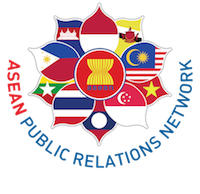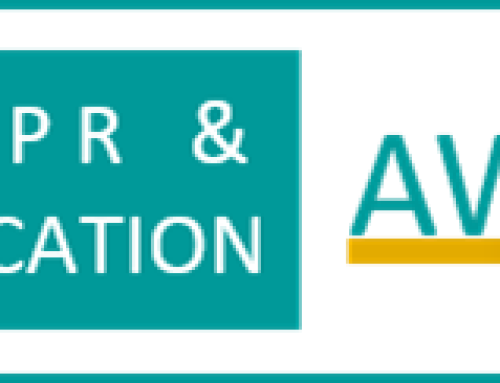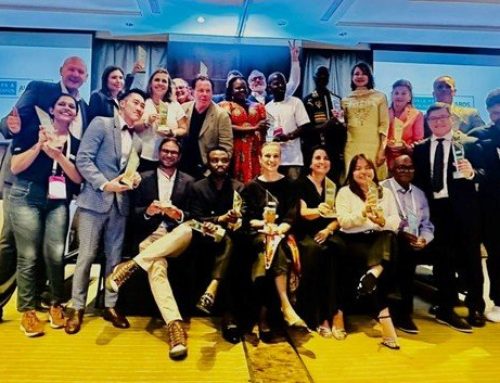The second ASEAN PR Conference was held on April 29, 2019, hosted by Kuching, Sarawak, and the ASEAN PR Network (APRN) in collaboration with the Institute of PR Malaysia (IPRM) and the Global Alliance for Public Relations and Communications Management (GAPRCM).
Aptly called Kuching Communique, the conference focused on key issues relating to how PR professionals engage with their international publics. It adopted the theme “Communication, Attention, Tactics,” which was inspired by the survivalist instinct of a cat with nine lives. It was operationalized by fielding nine resource speakers from around the world who shared their respective expertise and experience in a dynamic, fast-paced TED talk style presentation, on strategies and tactics to thrive in the highly evolving, competitive communication arena. This writer was one of the nine resource speakers and talked about “Agility: Be nimble or lose out in PR.”
The presentation is shared below:
In today’s volatile, uncertain, complex and ambiguous (VUCA) environment, and the challenges of digitalization, many corporations are forced to question traditional ways of organizing their activities. Organizations can no longer hide behind their brands amid a rapidly changing world. Local issues become global in minutes; inconsistencies become transparent; we live in a speeded-up, always-on world that requires robust processes, common standards and clear ways of working across the company.
A big umbrella concept often associated with the “thinking smart, thinking fast” is agility—where organizations should become importantly: more flexible, faster and responsive using new ways of planning, organizing, and relating with stakeholders; and communication and PR leaders will lead the change toward agility in their organizations, lest they be affected by change initiated in other parts of the organization.
Bong Osorio, resource speaker in the second ASEAN PR Conference held in Kuching, Sarawak, island of Borneo
What is agility? “Agility is the overall capability of an organization to respond to and take advantage of the changes initiated by the drivers in the internal and external environments. It includes the ability to identify relevant changes and to respond proactively, efficiently and effectively, employing the right personnel based on competence, not hierarchical status.”
Four factors that drive agility:
- Structures and processes. Agile structures and processes are critical for flexibility and speed. Linear, bureaucratic structures with rigid chains of command often make decisions slow and ineffective. Working in functional silos creates redundancies and a lack of information and transparency. Thus, agile departments work toward flatter hierarchies, decentralize power, establish iterative decision-making processes and set up cross-functional teams.
- Culture and people. Agile PR organizations come to life through the people working within them. Creating and imbibing an altered mindset and corporate culture are probably the most important providers of agility. PR heads and team members both require openness and willingness to work in cross-functional teams with a stronger emphasis on collaboration, interaction, self-management and knowledge sharing.
- Tools and technologies. Technologies such as digital collaboration tools and knowledge management platforms support agile work flows.
To perform smarter PR communications today, you must be agile and on the ball with a world on fast-forward. Being agile is being nimble or graceful. It is your body’s ability to change its position efficiently, which requires a combination of isolated movement skills like balance, coordination, speed, reflex, strength and endurance.
In an organizational context, agility is the ability of the company to create value and continuously and consistently charm the customer, while promoting and responding to changes in its environment. Agility requires the alignment of employees to a common vision to achieve key differentiators against competitors. In today’s world of complexity and competition, the challenge is not only to deliver value early but also, for the most part, to make people happy.
- In the book Agile PR: Expert Messaging in a Hyper-Connected, Always-On Worldby Marian Salzman, you go through a simulated agility boot camp. You’re given a quick course in the art and sport of answering to everything that confronts you, from a witty tweet to a malicious Facebook post to an intriguing Instagram image or an issue gone viral. The sensible insights, advice and takeaways served up are as applicable to iconic communication planners as they are to people just starting to build their own communication careers. Here are key takeaways from Salzman’s must-read tome:
The PR communication industry is constantly evolving and brands must be agile to keep up with competition
You need to treat your work-life balance like an extended graduate education. Today, it’s about knowing which measures matter most in terms of key performance indicator (KPI) and return on investment (ROI). You must be able to combine your love of words with a love of numbers. Maybe it’s proof of that career adage about finding something you love. And, as you find that love, the fundamental rules of transparency, accuracy and timeliness are constants.
PR messages must be expertly crafted to fly in a hyper-connected, always-on world
To do so requires a mastery of your brand narrative, extreme knowledge on how to create a compelling story, and how you network and distribute it.
The keys to maintaining a positive brand reputation remain the same
Do your homework, know the truth, monitor the moment, understand the key influences, use influence smartly and fairly, and never disconnect. It sounds exhausting—and it is. Or think of it as living agile for work—it’s about knowing the problem, identifying and constantly modifying the solution, staying in the game always. Being at it 24/7 and 365 days, and using all the tools and tactics that have emerged to make us faster, slicker and more thorough are the norms now. And know how to apologize, make corrections and implement revisions. Whether it’s for a person, product or issue, reputation management is a demanding activity. You constantly revise and tweak.
The way you do PR communication has been altered by digital
It means your test for skills in publicity, promotion and influencing people is turbocharged with constant connectivity and the endless “trialogue” of the story: the comments and the comments on the comments. Another challenge—energizing and exciting, but also scary—is that you can’t control your environment. A story keeps being revised with individual inputs, some true, some fake, some smart, some silly, some witty and some even dangerous. Today, reputation management becomes about brand and idea stewardship versus command and control. Today, the story never sleeps. That’s why you need to master and muster agile influence. Know where you want to drive a story, and utilize all the smart stuff available to manage that influence.
Familiarize, engage, produce, amplify and measure (FEPAM)
These are the key components of successful strategic communications today. Constant improvement is necessary because you are measuring to make it better, not just for the sake of KPIs or ROIs. It is increasingly important to strategically utilize your basic team: paid, owned, and earned media. You want each one to enhance the other, and “amplify” is what makes “familiarize” and “engage” sing collaboratively.
Craft the news, be the news, know the news
These are the secrets for media-relations success. It all sounds obvious, and yet the big opportunity is to think like a news owner and write like a Pulitzer Prize winner and curate visuals, remembering the adage “a picture is worth 1,000 words.” In today’s world, it is also about knowing how to craft the perfect e-mail headline or 140-character pitch for text messaging and Twitter.
The 10 characteristics of an agile PR business and professional include adaptability, thorough learning, absorbing as much as you can, seeing the forest, not just the trees, building and nurturing relationships, getting conversant with your products and services, doing great stories, remaining honest and truthful, giving attention to detail, and being thick-skinned.
Embracing agility in public relations doesn’t have to mean throwing out tried-and-true tactics. It’s a process of keeping mainstream ways with agile modes to better connect with those around you, changing the way you look at things as you represent and express who you are.
PR Matters is a roundtable column by members of the local chapter of the United Kingdom-based International Public Relations Association (Ipra), the world’s premier organization for PR professionals around the world. Bong R. Osorio is a communications consultant of ABS-CBN Corp., SkyCable, Dentsu-Aegis Network and government projects, among others, after retiring as vice president and head of the Corporate Communications Division of ABS-CBN.
Written by : Mr. Ramon Osorio – PR Society Phillipine
https://businessmirror.com.ph/2019/05/06/agility-in-a-vuca-world/





